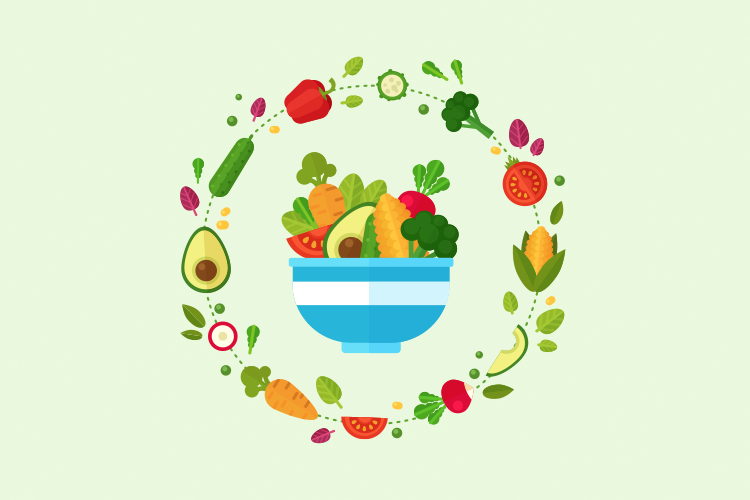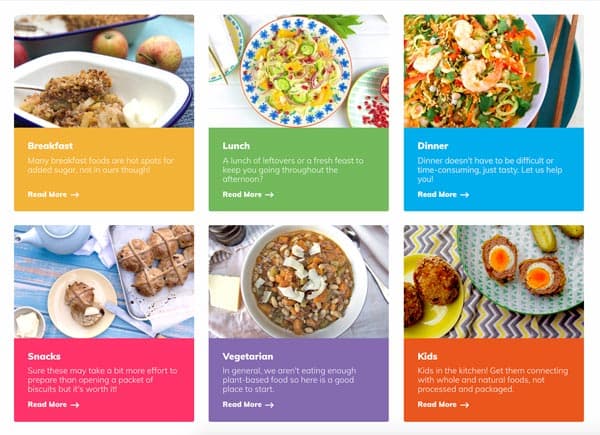Blog
Whole food low-carb and improving insulin resistance
 Insulin resistance and type 2 diabetes can lead to not-so-great complications for the body and the brain, which can impact on quality of life.
Insulin resistance and type 2 diabetes can lead to not-so-great complications for the body and the brain, which can impact on quality of life.
Alongside managing the condition through constant monitoring and medication, possible side effects include poor sight and circulation, increased risk for heart and kidney diseases, even amputation, if left unmanaged.1
Risk for developing type 2 diabetes increases significantly with high blood pressure, obesity, low physical activity, and diet.2 Chronic and high intake of free sugars and trans-fats may alter insulin signalling and sensitivity, and encourage excessive inflammation and tissue damage throughout the body.3-4
And it has also been found that excess free fructose specifically – like the stuff glugged back in many sugar-sweetened drinks – can contribute to an excess of internal glucose production and insulin resistance.
Lowering the intake of foods rich in carbohydrates is growing in popularity for as part of treatment for insulin resistance and type 2 diabetes. Specifically, reducing intake of simple carbohydrates found in heavily processed and refined foods.
Increasing insulin sensitivity with food
A study recently published from the University of Michigan found improvements in evening postprandial high blood glucose, and compensatory insulin response, in post-menopausal women given 3 low-carbohydrate meals over 24 hours compared with those on the currently recommended higher-carb amount.5
Here is how they compared:
| Low-carbohydrate | High-carbohydrate | |
| Macronutrient ratio | 30% carbohydrate, 25% protein, and 45% fat | 60% carbohydrate, 15% protein, and 25% fat |
| Glycemic index | Morning meal: 53
Evening meal: 51 |
Morning meal: 58
Evening meal: 68 |
| Sugar content of carbohydrates from 3 meals* | 28g | 49g |
| Fat content inc. saturated, monounsaturated & polyunsaturated fatty acids | 10-14g | 6-7g |
*Note – this is total sugar, which includes but is not exclusively added sugar.
As a point of reference, in Australia currently, the recommended ratio for macronutrient energy intake is 15-25% protein, 45-65% carbohydrate, and 20-35% fat (including up to 10% being from saturated fat). And generally speaking, a low-carbohydrate intake can have somewhere between 26-45% carbohydrates, with a very low, ketogenic style of diet consuming only 6%.6
As seen above, this study limited carbohydrate intake to 30%, and in doing so, post-meal insulin resistance was lowered by 30%, while the high-carb offered sustained insulin resistance, indicating a diet comprising 30% carbohydrate may help with pre-diabetes and type 2 diabetes.
It is important to remember that the study population was a select group, and the trial very short in duration. However, previous research has seen similar positive outcomes.7
“We showed an acute, one-day reduction in insulin resistance after the third low-carbohydrate meal eaten in the evening, so one could argue that this is transient and insignificant,” Katarina Borer, principal study investigator, said. “But at least two other studies where high-carbohydrate meals were fed to volunteers for 5 and for 14 days show that the outcome was worrisome. These subjects developed increased fasting insulin secretion and insulin resistance, increased glucose release by the liver which produced high blood sugar, and dramatically lowered fat oxidation that contributes to obesity. These then were more persistent effects that could be a path to prediabetes and diabetes.
“What is remarkable about our findings is that they show that a simple dietary modification of reducing the carbohydrate content of the meals can, within a day, protect against development of insulin resistance and block the path toward development of prediabetes while sustained intake of high carbohydrate diets as shown in the two mentioned studies lead to increased fasting insulin secretion and resistance.”
Other research also supports lowering our refined carbohydrate intake. A recently released meta-analysis reported decreased risk for type 2 diabetes when replacing refined carbohydrates with healthy fats such as those in avocado, olive oils, nut, seeds, and fish.
A 24-week intervention reported the low-carb diet was well tolerated in those with type 2 diabetes, and resulted in improved glycaemic control and reduced use of hypoglycemic medication.8
Eating low-carb seems to be a great option for many with type 2 diabetes. Diabetes UK recently announced that their online low-carbohydrate eating plan – pitched at 120-150g per day – is positively benefitting participants and may save millions in prescriptions and other associated healthcare costs.
The plan involves education on quality of food and portion sizes. And fortunately, unlike the study above, it emphasizes the importance of enjoying real food over heavily processed, including whole foods, naturally sourced healthy fats, and having a strong vegetable intake.
If you are interested in moving to a lower carbohydrate way of eating, chat with nutritionist or dietician who supports your interest. They can assess your individual situation, and guide you in a structured manner to make long-term sustainable changes, that will hopefully lead to positive health outcomes!
Low-carb with real food
Admittedly, many studies include some pretty average foods – the low-carb group in the University of Michigan trial above were provided fruit juice, flavoured yoghurt and mac ‘n’ cheese!
But imagine what the benefit could be if the group got served real, whole food instead?
This means limiting the intake of foods such as heavily refined white flours, margarine, and cheap cooking oils, and those containing added sugar like sugar-sweetened beverages. Foods like this have little, if any, nutritional value compared to their whole food, less processed counterparts.
Instead enjoy:
- mostly vegetables
- moderate intake of healthy whole food fats like extra virgin olive oil, nuts, seeds, avocado
- moderate intake of protein from nuts, seeds, legumes and animal products like eggs, fish, dairy, and meat.
And it is okay to include some complex carbohydrates – though how much or how little will depend on your individual situation and something you should chat to your healthcare practitioner about. They still have a place in the human diet, but the heavily processed and refined stuff does not.
By Angela Johnson (BHSc Nut. Med.)
References
- NPS MedicineWise 2016, Complications of Type 2 Diabetes, viewed 9 November 2016, <http://www.nps.org.au/conditions/hormones-metabolism-and-nutritional-problems/diabetes-type-2/for-individuals/complications>.
- Diabetes Australia 2015, Type 2 Diabetes, viewed 9 November 2016, <https://www.diabetesaustralia.com.au/type-2-diabetes>.
- Gropper, SS & Smith, JL 2013, Advanced Nutrition and Human Metabolism, 6th, Wadsworth, Cengage Learning, Belmont CA.
- Hechtman, L 2012, Clinical Naturopathic Medicine, Churchill Livingstone, Chatswood, N.S.W.
- Accurso, A et. al 2008, ‘Dietary carbohydrate restriction in type 2 diabetes mellitus and metabolic syndrome: time for a critical appraisal’, Nutrition and Metabolism, vol. 5, no. 9.
- Lin, P, & Borer, KT 2016, ‘Third Exposure to a Reduced Carbohydrate Meal Lowers Evening Postprandial Insulin and GIP Responses and HOMA-IR Estimate of Insulin Resistance’, Plos One, vol. 11, no. 10, p. e0165378.
- Feinman, RD, Pogozelski, WK, Astrup, A, Bernstein, RK, Fine, EJ, Westman, EC, Accurso, A, Frassetto, L, Gower, BA, McFarlane, SI, Nielsen, JV, Krarup, T, Saslow, L, Roth, KS, Vernon, MC, Volek, JS, Wilshire, GB, Dahlqvist, A, Sundberg, R, Childers, A, Morrison, K, Manninen, AH, Dashti, HM, Wood, RJ, Wortman, J, & Worm, N 2015, ‘Dietary carbohydrate restriction as the first approach in diabetes management: critical review and evidence base’, Nutrition (Burbank, Los Angeles County, Calif.), vol. 31, no. 1, pp. 1-13.
- Krebs, JD et. al 2014, ‘Improvements in glucose metabolism and insulin sensitivity with a low-carbohydrate diet in obese patients with type 2 diabetes’, Journal of the American College of Nutrition, vol. 32, no. 1, pp. 11-17.











